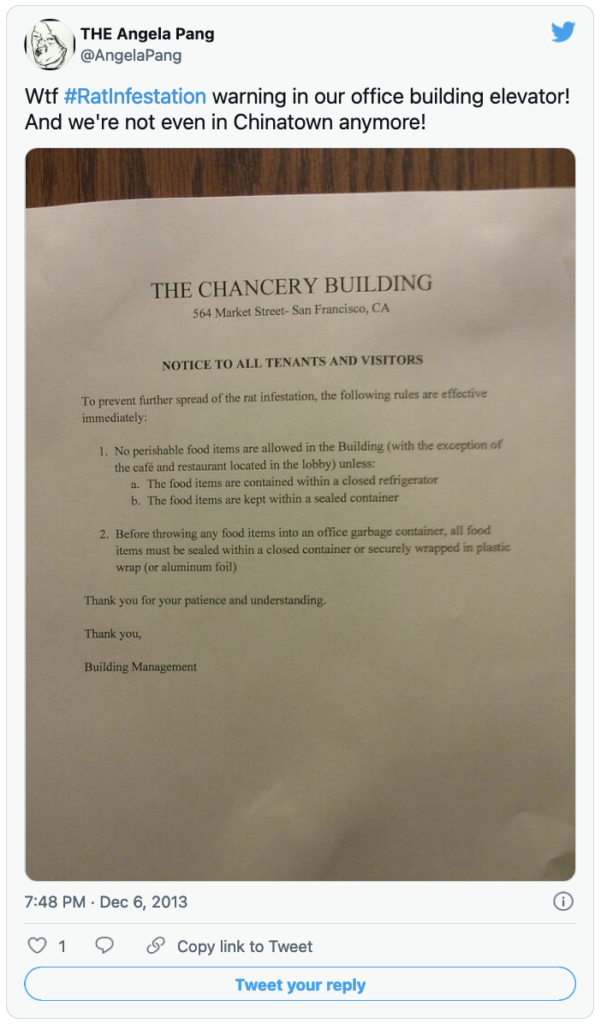7 genius marketing strategies for pest control companies
The U.S. pest control market is growing fast. These marketing ideas for your pest control business will help you generate more leads.

The U.S. pest control market is growing fast. These marketing ideas for your pest control business will help you generate more leads.

With 14 million people reporting sightings of roaches and rodents in 2021, pest control companies have a lot of customers out there looking for help.
So, how can you best market your pest control company and generate leads? We’ve collected seven clever pest control marketing strategies to inspire you.
Ever searched high-and-low for pest control marketing ideas only to find the same vague “use social media” advice?
Not knowing what to do for your next big marketing campaign or push is one of the biggest reasons why most pest control business owners do nothing or stick with the status quo.
We get it. No one wants to waste money or time on strategies that don’t work.
That’s why we put together these seven “genius” pest control marketing strategies. They’re not the same recycled tips and tricks that you see time after time.
There are a lot of people Tweeting about their pest control issues.

So, using Twitter to connect and interact with these folks is an easy way to generate leads for your pest control business. All you need to do is use Twitter’s advanced search option.

Then search for tweets with keywords like “rat”, “infestation”, “bugs” around your vicinity. You’ll find that many of these people need your services.

Tweet at them or just Favorite and/or Retweet their tweets. They’ll become curious and come check you out.
Every region has its own pests. Focus your content on the ones that pop up most in your area and include useful information about them.
The best way to do this is to keep track of your appointments throughout the year and cross-reference your most common appointment types with your state or city’s Department of Health.
For example, Washington State keeps a running list of pests specific to the Pacific Northwest. Do a quick search of your area for similar resources.
You can also use a free tool like Google Trends to see what people are searching for in your state or area. Here’s an example for the search term “Palmetto bug” in Florida. (We can even see that during the summer months there’s a spike in interest.)

It’s why companies like Larue Pest Management have written articles that target people looking for more information on their local pests.

Noah James and the team at Liberty Lawn Maintenance take every opportunity to let other homeowners know about infestations.
After each appointment, they visit other houses in the area to let them know about the nearby pests. They also offer to do a full complimentary assessment to prevent an infestation before it starts.
“Just because pests are not on the property doesn’t mean they won’t be. Selling pest control services preventatively is even more profitable for us than when we are called.”
Another strategy you can steal: give customers a discount on your service if they agree to leave a sign in their yard for a set number of days.
Get onto apps like Nextdoor or community blogs to advertise your services. People often join neighborhood apps and sites to get access to local businesses.
All you’ll need to do to get set up on Nextdoor is search your name in the directory and click “Claim” when you find it. From there, you’ll input some account information and Nextdoor will verify your contact number.
You’re all setーnow you can start responding to posts from homeowners looking for a pest control company and posting promotions with the in-app Offers feature.
Strong pest control branding and marketing often means keeping an eye on what homeowners in your area are looking for. Neighborhood apps let you hear directly from your community.
Nextdoor isn’t your only tool when it comes to connecting with local residents. You can also use real estate sites like Zillow, Redfin, or Realtor to search for recently sold listings.
Once you find a few newly sold homes, head over to knock on the door or leave a flyer. If you want to add an extra personal touch, you can even send a handwritten note by snail mail.
The same strategy applies to realtors in your town. You can partner with agents and serve their properties at a lower rate in exchange for them handing new residents your flyer.
Beyond just browsing for new homes, you can keep an eye on the local planning board to get early notice of new apartments and restaurants being built. Talk to the owners at board meetings and give them your business card so you’re the first choice for pest control services.
Herbert Riggs, CEO of UnscrambleX, swears by Google My Business listings. He notes that businesses with verified Google My Business listings often rank faster in local search engine results than those without.
Setting up a free listing takes only a few minutes. All you have to do is give your business name, address, phone number, business hours, and other contact information.
Google favors GMB listings with lots of online reviews and positive feedback. Be sure to include a request for feedback on your flyers or in emails or texts after appointments.
If you’re not sure where to start, use GMB Crush. It’s a Google My Business Audit Tool that reverse-engineers your Google My Business competitors’ success in a couple of clicks by analyzing their:
You can then compare it to your listing to see what to add to outrank your competition.
These days, your customers are spending more and more time on their phones. With higher open rates than email, texts are an effective addition to your marketing strategy. We’ve seen pest control companies:
The number one way pest control companies use texting? They place a Click-to-Text button on their mobile site.

56.16% of all web traffic comes from mobile devices, so it’s an easy way to provide an online experience that’s optimized for cell phones.
Years ago, most pest control companies settled for advertising their service with flyers stuck onto door handles. Now, pest control marketing is getting more creative, and more competitive.
Use these strategies to get ahead and make your marketing strategy reach more potential customers than ever. For an easy, free start, give SimpleTexting’s SMS marketing platform a try for 14 days.
Lily is a content marketing specialist at SimpleTexting. She specializes in making helpful, entertaining video content and writing blogs that help businesses take advantage of all that texting has to offer. When she’s not writing or making TikToks, you can find Lily at roller derby practice or in a yoga studio in the Seattle area.
More Posts from Lily NortonStart your business off on the right foot. In this article, we'll explore grand opening ideas that will benefit your company during, and after, your launch.
ReadMake it easy to encourage customers to leave reviews for your business by learning how to get the review link for a listing on Google, Facebook, Capterra and Yelp.
ReadStart a text marketing campaign or have a 1-on-1 conversation today. It's risk free. Sign up for a free 14-day trial today to see SimpleTexting in action.
No credit card required